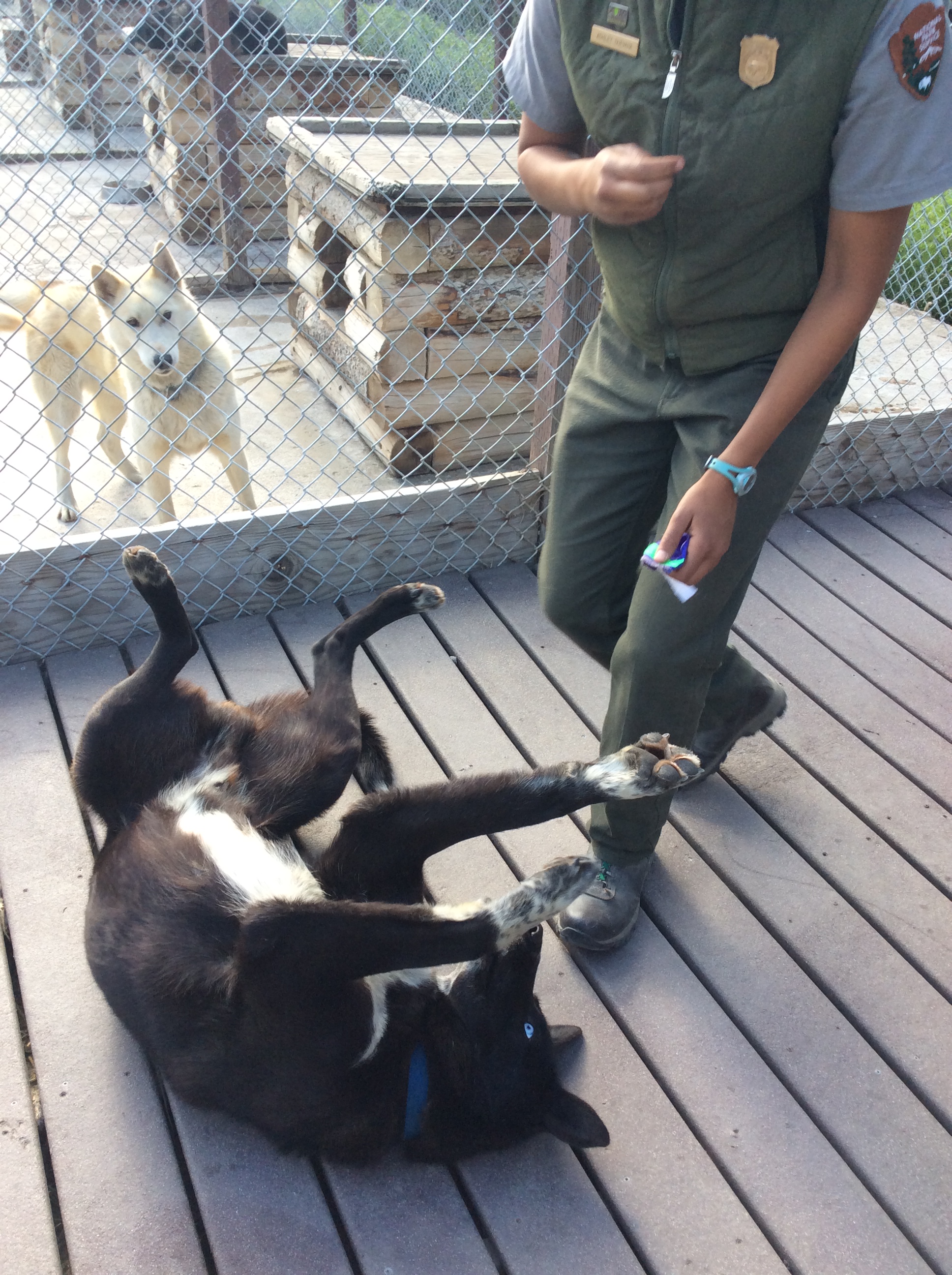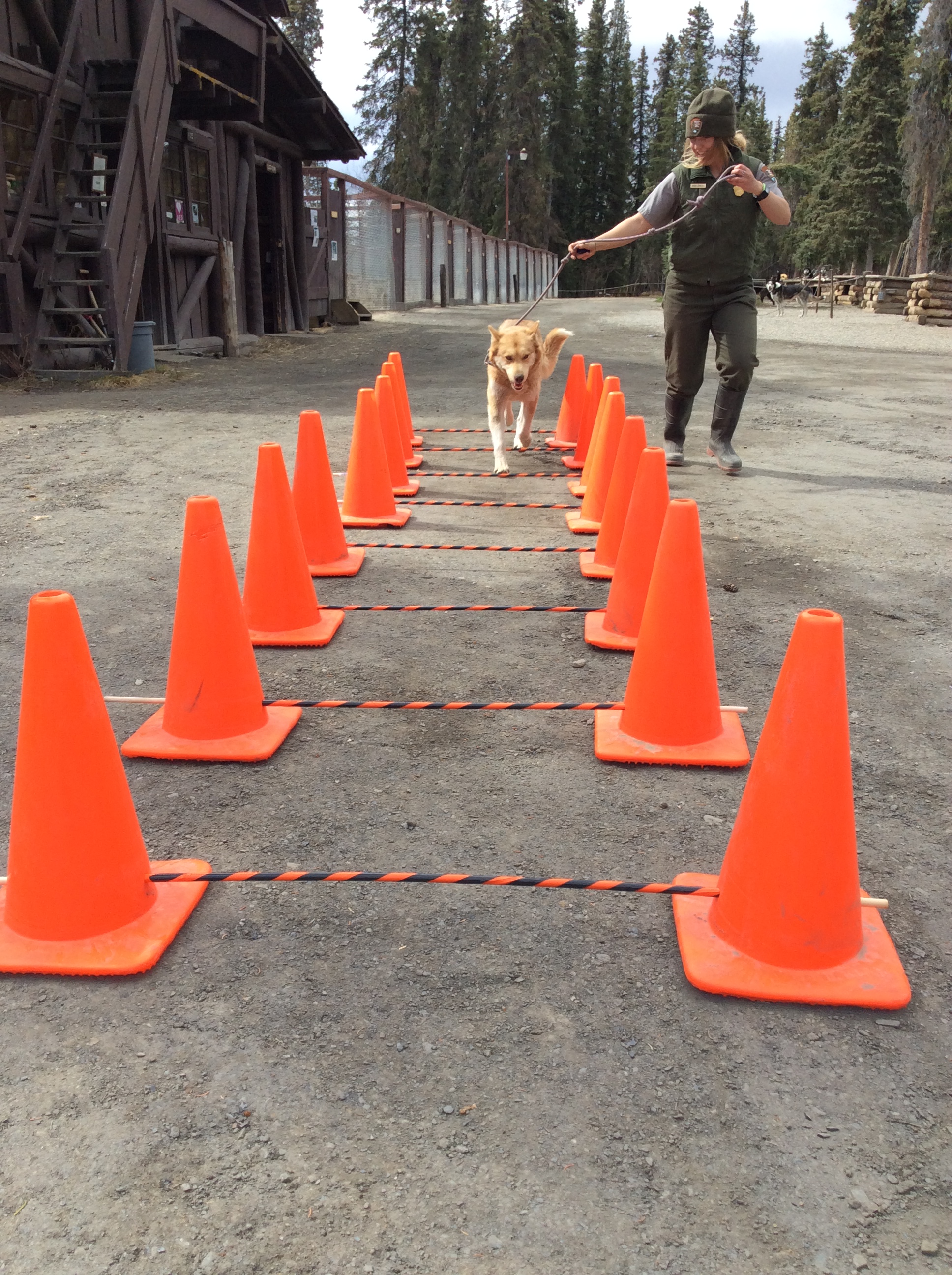The popular saying is "You can't teach an old dog new tricks" but here in Alaska it's more common to hear the saying "You can't teach a sled dog any tricks". In the dog sledding world it is a very uncommon practice to see sled dogs sit, rollover, or paw up on command. With a demanding training schedule, mushers can be hard pressed to find time to teach tricks or obedience to dogs. Here at Denali we have a different viewpoint. For some it might just seem like a cute way to entertain visitors coming through the kennel but for the sled dogs of Denali, learning tricks is all about training and preparing for next winter. From balancing on their hind legs to rolling over with their paws up, there is always an underlying reason we choose to teach a trick.Rather than thinking of them as tricks we like to think of these activities as strength training exercises which will help us minimize dog injury during winter work. Not only are the training sessions beneficial for the dog's bodies but it's also a fun way for the dogs to work their brains during the hot summers. Alaskan Huskies are working dogs and they love the challenge of problem solving and route finding on the trail in winter. In the summer, while it is too hot to for long runs they really enjoy the mental challenge of working with us to problem solve and learn new training exercises.
Balancing on hind legs or "bear" pose: This exercise is a really great way to teach body awareness and balance to dogs. The chest, back, and hind quarters are the most engaged muscles while a sled dog is pulling in the winter. By engaging their core to balance on their back legs, the dogs are strengthening all of those key areas to help prevent pulling injuries in their backs.
To keep a nice strong core during the summer, Zahnie practices engaging all of his muscles and balancing on his back legs
Paws up: A sled dog's feet are incredibly adapted for cold weather but there can be times that it is necessary for us to put booties on the dogs. The booties are designed to be a barrier to prevent snow from creating ice balls between the dog's toes. Obviously we can't exactly teach the dogs to put their own shoes on, but we can teach the dogs ways to make it easier for us to help them get them on. We have been able to teach a few dogs to roll over with their paws lifted in the air to make booty application and foot checks easier for us.
Here, Lucky demonstrates the "Paws Up" exercise we use to make foot checks fun and easy
Gee Haw nose bump: A great way to introduce the directional commands to puppies is to start by having the dogs touch their nose to a rubber indicator. Slowly we start to add "Gee" and "Haw" to the puzzle as we move the indicator for one side of the dog to the other. Eventually the indicator can be removed and the puppy will hopefully look or move to the correct sides when directional commands are called.
Summit, one of the puppies from last year, prepares to learn his directional commands.
Balance balls and wobble boards: A very common injury in sled dogs during the winter are strained wrists. While the dogs are working hard to pull through deep snow as well as across ice, gravel, and tundra, their wrists are especially prone to inflammation and impact injury. Balancing on wobble boards takes extreme focus and the slightest shift in weight will cause their wrists to flex in a way that gently strengthens all of those tiny muscles and tendons in their feet and wrists.
Carpe is an excellent balancer and often works on this micomuscles in his wrist
Cavaletti Poles: Cavaletti is an exercise made up of a series of cones and poles. Cavaletti are used to teach dogs an effective 4 beat gait called a trot. In order to do their jobs efficiently and safely, it is important for the dogs to learn a proper trot. Some of our sled dogs like to use a "lazy" gait called pacing where they move the front and rear legs on the same side of the body at the same time. Though this requires minimal effort of the dogs it can lead to strain in the back as the body rolls side to side when a dog paces. By moving in an ergonomic way, the trot reduces athletic injuries when we are covering long distances with the dogs.
As Rupee trots through Cavaletti poles she is practicing moving with an effective gait.
We love to keep the atmosphere lighthearted and fun for the dogs here at Denali. By giving the dogs proper building blocks mentally and physically in the summer we are all setting ourselves up for success during the busy and physically demanding winter months. Fewer injuries mean happy dogs and happy mushers!
"The dogs are really smart they love to learn" says Ranger Ashley "These training sessions are as fun for me as they are for them!"





